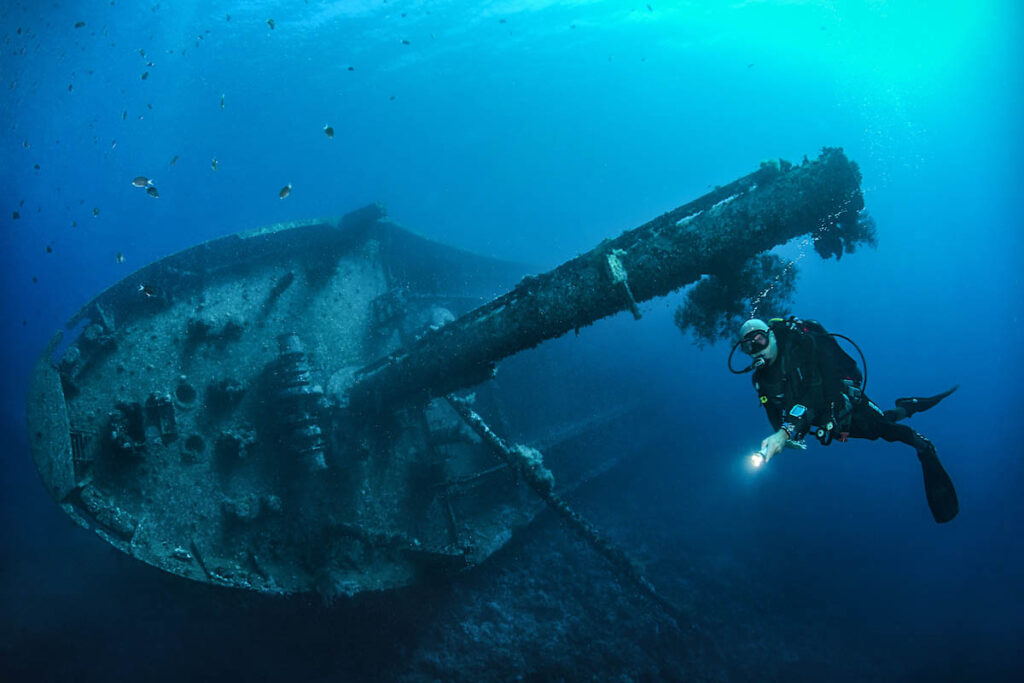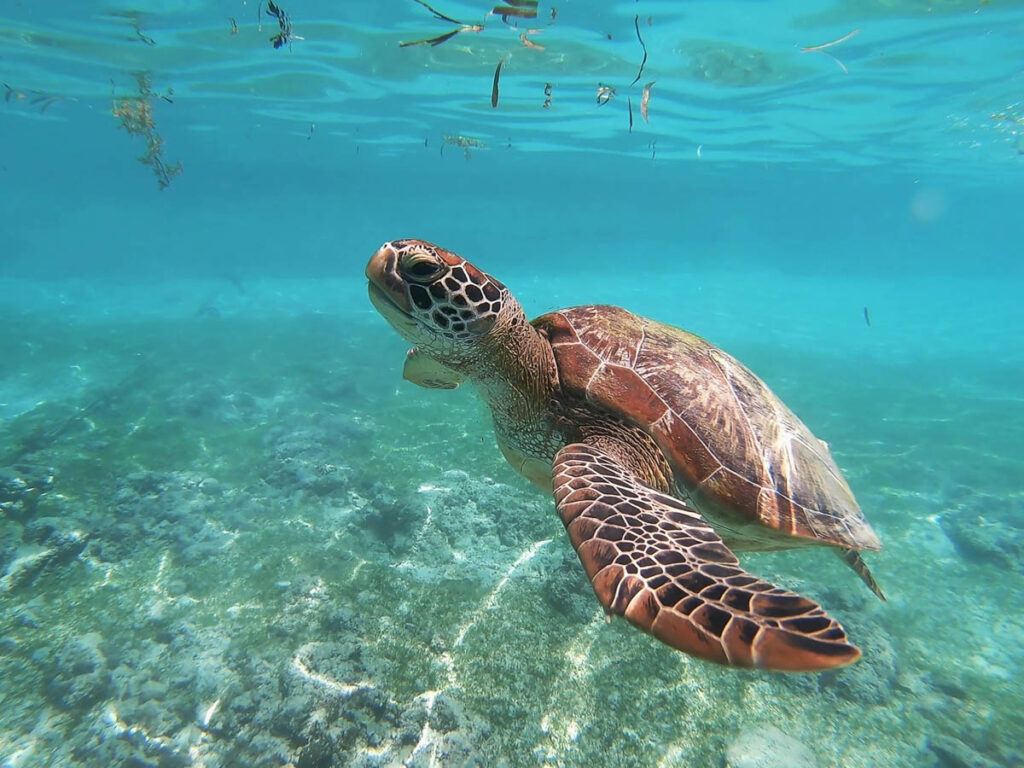With more than 7,000 km of coastline dotted with bustling cities, Brazil offers a unique mix of culture, history and world-class diving. This fascinating country is home to the only coral reefs in the south Atlantic Ocean and has numerous dive destinations. Between them, they include two wreck diving meccas, vibrant coral reefs, marine parks, and a UNESCO World Heritage Center. But where are the best places to go diving in this vast country? Let’s find out in our round-up of the best scuba diving in Brazil.
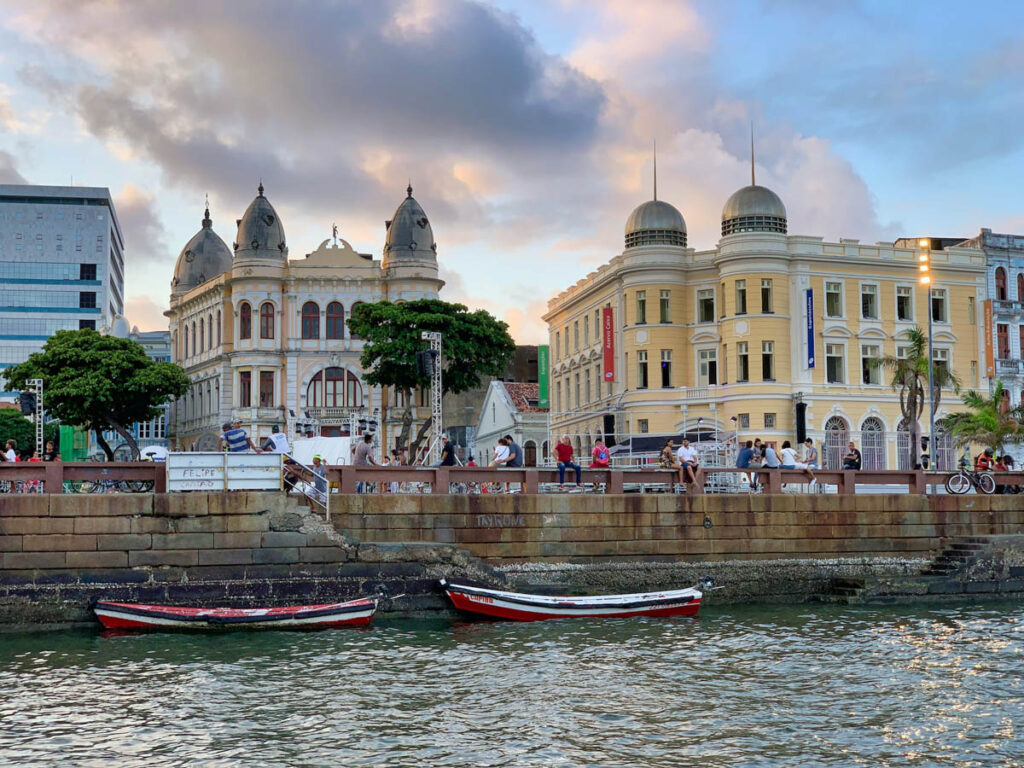
Recife
Recife is known as the shipwreck capital of Brazil and boasts more than thirty wrecks you can dive, plus many more hidden in the depths. This vibrant coastal city in northeastern Brazil is also surrounded by islets and peninsulas that offer fantastic reef diving.
There are dozens of shipwrecks to choose from at Recife, from historic 19th Century ships through to modern vessels. All of which are thriving artificial reefs that host colorful reef life and visiting pelagics.
As Recife sits behind a protective reef, the dive conditions can be wonderful, with high visibility and clear, warm waters all year. The reef also attracts abundant marine life, including nurse sharks, rays and countless sea turtles.
Fernando de Noronha
Take a trip 400 km offshore from Recife and you can explore a UNESCO World Heritage Centre, the Fernando de Noronha archipelago. This volcanic archipelago offers the best diving in Brazil and has countless pristine dive sites.
Famed for its clear waters and spectacular topography, Fernando de Noronha is made up of 21 islands that are home to seabirds, reptiles and abundant marine life. It is a sanctuary for wildlife and a National Marine Park that offers exceptional diving.
Fernando’s waters are extremely important as a breeding and feeding ground for tuna, sharks, sea turtles and marine mammals. Go diving there and you will likely see dolphins, schools of pelagic fish and sharks, including Caribbean reef sharks, lemon and nurse sharks. There are also tiger and hammerhead sharks further out.
There are caves, swim-throughs, tunnels and caverns to explore, with beautiful rock formations that host an array of reef fish. With lagoons and tidal pools as well, Fernando de Noronha is a must for any keen scuba diver.
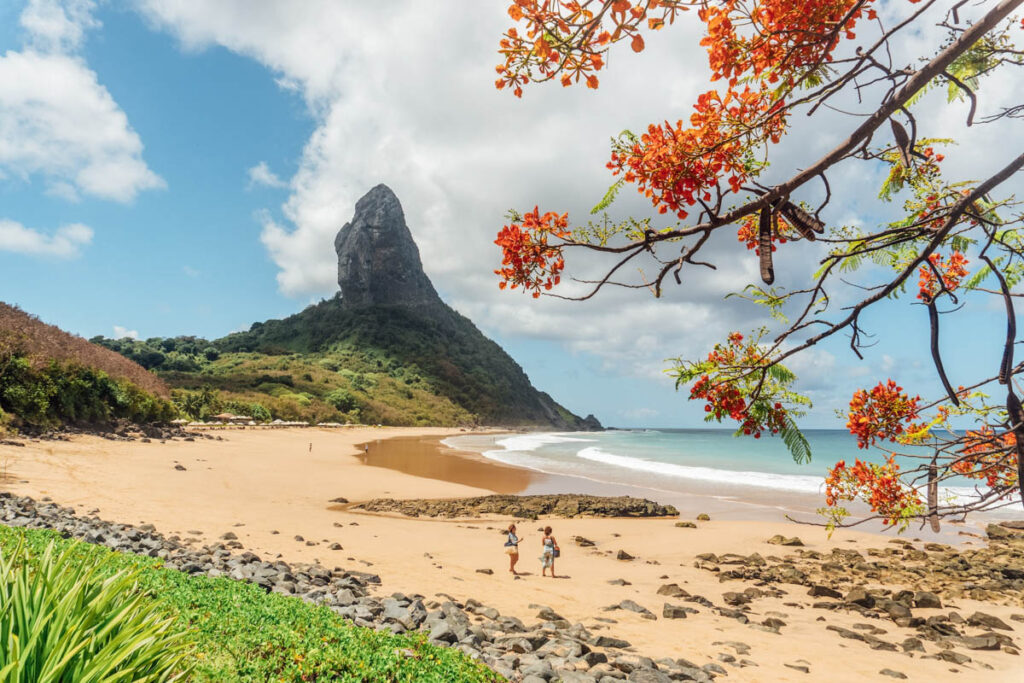
Sao Paolo
Sao Paolo is Brazil’s largest city and is an important cultural, architectural, and fashion center with iconic buildings and a selection of museums. It also hosts the Laje de Santos Marine Park, a famous migratory route for manta rays.
Sao Paolo’s coast is dotted with multiple dive sites in the north and south, which can be reached with a short boat ride. It is one of the most diverse dive destinations in Brazil, with a range of wrecks, shallow and deep dives, plus thrilling currents for experienced divers.
The Laje de Santos Marine Park is the most popular place to go diving in the area. As well as numerous visiting mantas and sea turtles, this marine park hosts pelagic fish, rocky-bottom fish, crustaceans and South Atlantic species.
For the best chance of encountering manta rays at Sao Paola, visit from March to September.
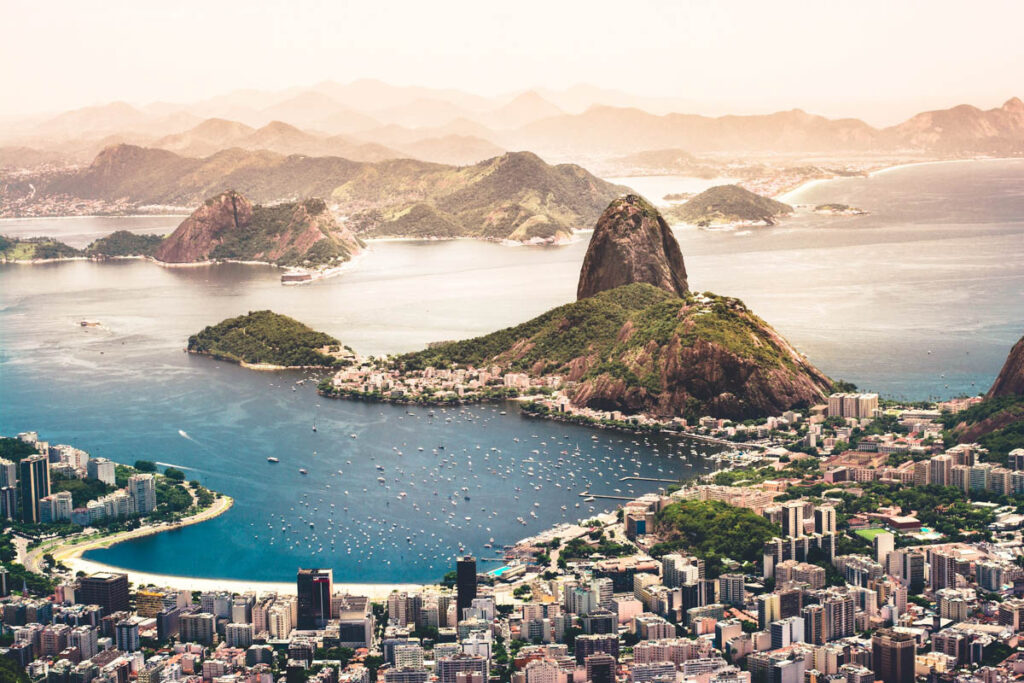
Rio de Janeiro
Rio de Janeiro might not be known for scuba diving, but it offers good dive conditions all year, with consistently clear, warm water and a range of dive sites. There are thriving oceanic islands just offshore, plus shipwrecks, tunnels and caverns.
With its diverse diving and numerous dive centers in the area, Rio is a great place to get your Open Water Diver certification and enjoy your first scuba dives in waters full of life.
The oceanic islands around Rio de Janeiro deserve a special mention. These islands attract diverse marine life and are the perfect place for divers to spot and photograph numerous fish species, plus moray eels, rays, turtles, octopi, and even visiting dolphins.
Added to that, returning to shore in the shadow of the Rio skyline is surely one of the most unique ways to end your diving day.
Abrolhos Archipelago
The Abrolhos archipelago is a group of five uninhabited islands off Brazil’s southern Bahia coast, washed by the Atlantic Ocean and home to the Abrolhos Marine National Park. This park is teeming with life and famed for its rare coral formations.
The crystal-clear waters of the Abrolhos archipelago host around 19 coral species, including brain coral, and are home to some of the most interesting reefs of South America.
Many of these reefs are called ‘Chapeiroes’ because they grow upwards in columns that resemble huge mushrooms. These unusual reefs host around 160 fish species and numerous sea turtles. The marine park is also known for its visiting humpback whales. Visit from July to November for the best chance of spotting these ocean giants.
Salvador
Salvador is a paradise for wreck diving and is one of Brazil’s best-kept secrets. Unlike Recife, this city is off the radar for divers and yet is has crystal-clear waters that are perfect for exploring the many ancient shipwrecks found there.
As one of the oldest cities in Brazil, Salvador has a rich history, and this is reflected in the wrecks you can dive. There is Blackadder, a 70-meter, three-masted Clipper sailboat from 1905 sitting at just 9 meters deep. This is a perfect wreck for new divers, with shoals of fish, seahorses and a well-preserved structure.
The Galeão Sacramento is a Portuguese galleon that sank in 1668 and is of great historic value, with cannons and anchors still remaining. It is perfect for advanced and Nitrox divers. Look closely at the cannons and anchors for the lobsters and moray eels that have made their home there.
As well as numerous wrecks, Salvador has beautiful coral-covered walls. The Quebra-mar is a two-mile wall swathed in corals. It is common to see seahorses there, plus lobsters, morays and countless vibrant reef fish. With a maximum depth of only 8 meters, it is accessible to all levels of diver.
Kathryn Curzon, a shark conservationist and dive travel writer for SSI (Scuba Schools International), wrote this article.



